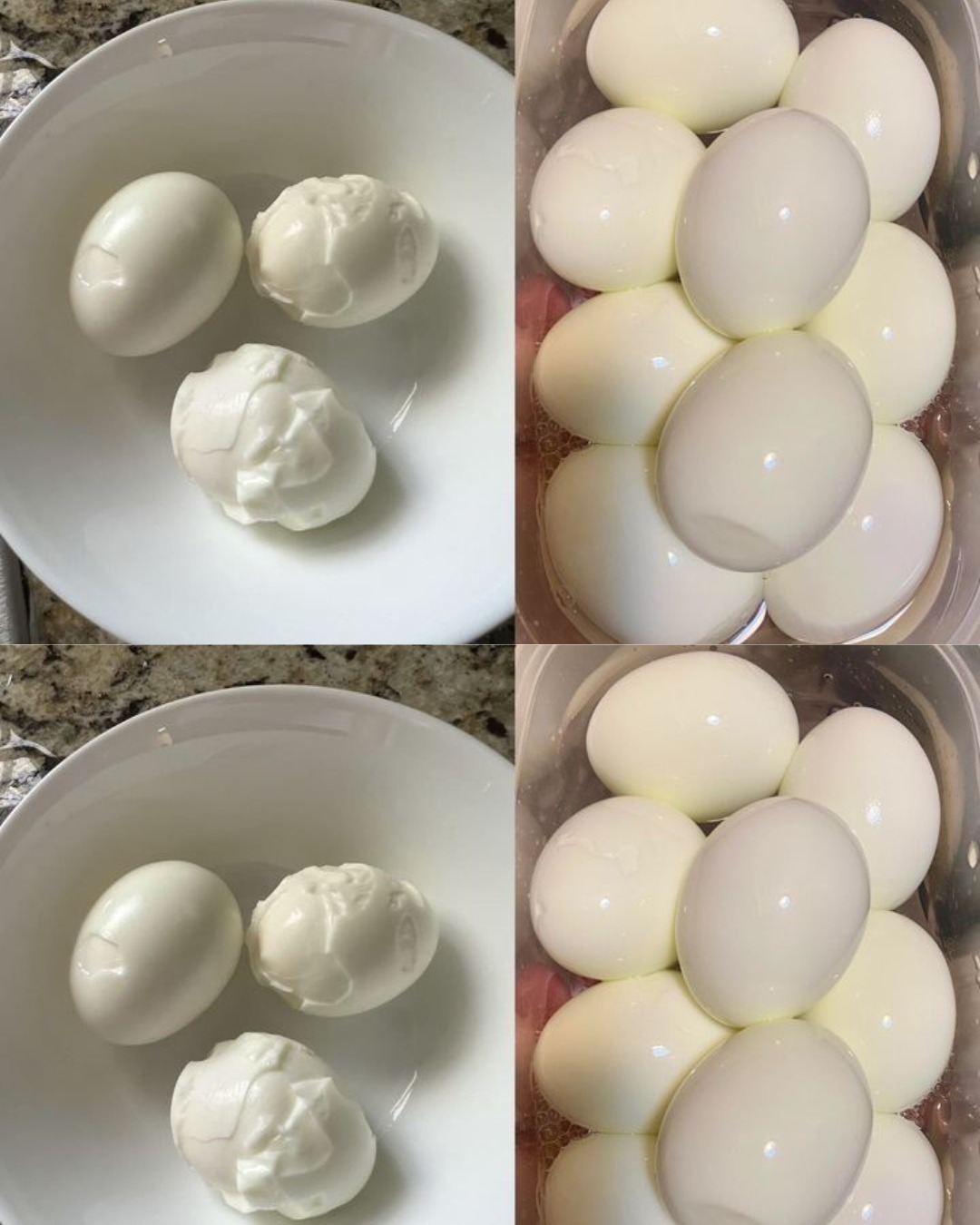ADVERTISEMENT
**Chef’s Clever Hack for Perfectly Peeled Hard-Boiled Eggs: Say Goodbye to the Struggle!**
If you’ve ever boiled a batch of eggs only to be met with the frustration of peeling them, you’re not alone. Cracked shells, bits of membrane stuck to the egg white, and those stubborn little bits of shell that just won’t come off can turn what should be a simple task into a real headache. Fortunately, there’s a game-changing solution that chefs have been using for years to ensure perfect, easy-to-peel hard-boiled eggs every time.
In this article, we’ll share a **chef’s clever hack** that guarantees you’ll never struggle with peeling hard-boiled eggs again. No more tearing the delicate whites or wondering why your eggs are suddenly impossible to peel. Whether you’re preparing eggs for a salad, making deviled eggs, or just looking for a healthy snack, this foolproof method will make your hard-boiled eggs a breeze.
### The Problem with Peeling Hard-Boiled Eggs
Hard-boiled eggs are a staple in many kitchens, but peeling them can be a frustrating process. The key issue lies in how fresh the eggs are. Fresh eggs are notoriously difficult to peel due to the pH levels of the egg whites. When eggs are freshly laid, the pH level is relatively low, making it easier for the egg white to bond tightly to the inner membrane of the shell. As the egg ages, the pH rises, which causes the membrane to loosen, making the eggs easier to peel.
But what do you do if you’ve got fresh eggs on hand and need to boil them now? That’s where our clever hack comes in.
### The Chef’s Hack for Perfectly Peeled Hard-Boiled Eggs
#### 1. **Use Older Eggs (If Possible)**
This is the first step to setting yourself up for success. If you have the luxury of time, use eggs that are a few days old rather than brand new. While this isn’t always possible, it helps significantly with the peeling process. If you only have fresh eggs, don’t worry! You can still use the hack below to improve the peeling process.
#### 2. **Add Baking Soda to the Boiling Water**
This simple trick makes a world of difference. Adding **baking soda** to the boiling water raises the pH level of the water, which helps to loosen the membrane from the egg white, making peeling much easier.
Here’s how to do it:
– For **1 dozen eggs**, add **1 teaspoon of baking soda** to the water before you bring it to a boil.
– The baking soda works by slightly altering the pH of the water, which in turn makes it easier to separate the shell from the egg white.
This hack is particularly useful when you’re working with fresh eggs.
#### 3. **Bring the Water to a Boil, Then Simmer**
Once you’ve added the baking soda, bring the water to a **boil** over high heat. Once the water starts to boil, reduce the heat to **medium-low** to maintain a simmer, and cook the eggs for about **9-12 minutes**. The exact time will depend on how well-done you prefer your eggs:
– **9 minutes**: Slightly soft, creamy yolk
– **12 minutes**: Fully set, firm yolk
The key here is to let the eggs cook gently so they don’t crack, which can lead to difficulty peeling.
#### 4. **Shock the Eggs in Ice Water**
This next step is critical for stopping the cooking process and ensuring that your eggs don’t overcook. As soon as your eggs are done cooking, immediately transfer them into a bowl of **ice water** or a bowl of very **cold water** for **at least 5 minutes**.
This cooling process does two things:
1. It helps prevent the eggs from continuing to cook (they’re already perfectly cooked).
2. It makes peeling much easier by causing the egg whites to contract slightly, which creates a gap between the egg white and the shell.
#### 5. **Crack the Egg Gently**
Once the eggs have cooled, gently tap them on a hard surface (like your kitchen counter) to crack the shell. Roll the egg lightly to ensure the cracks are all around the surface.
6. **Peel Under Running Water**
The final step is to peel the egg under **running cold water**. The water helps to wash away any bits of shell that may be stuck and ensures that the egg white stays intact. Start peeling from the wider end of the egg (where there’s usually a small air pocket), and the shell should come off much more easily.
For Complete Cooking STEPS Please Head On Over To Next Page Or Open button (>) and don’t forget to SHARE with your Facebook friends
ADVERTISEMENT
